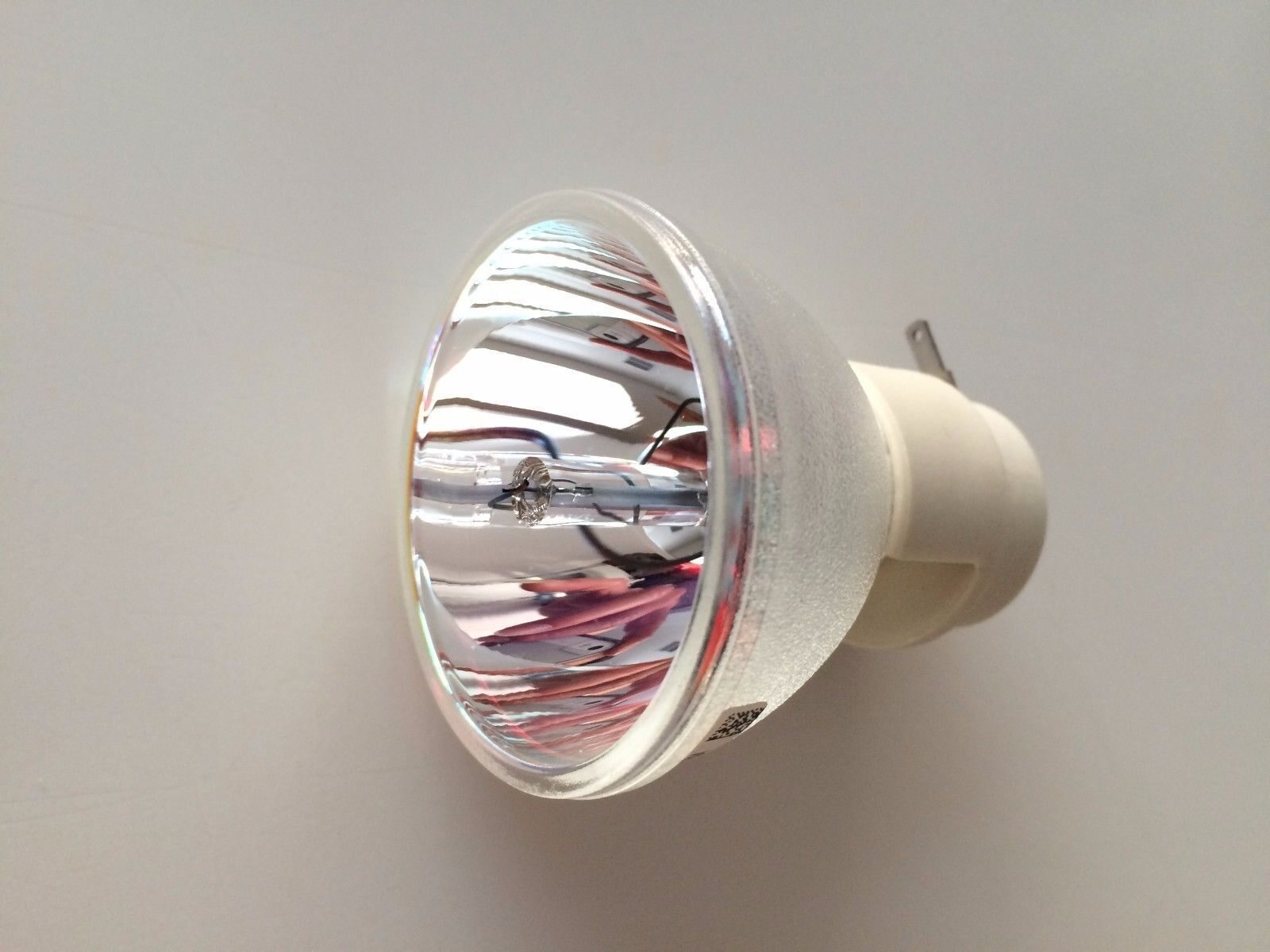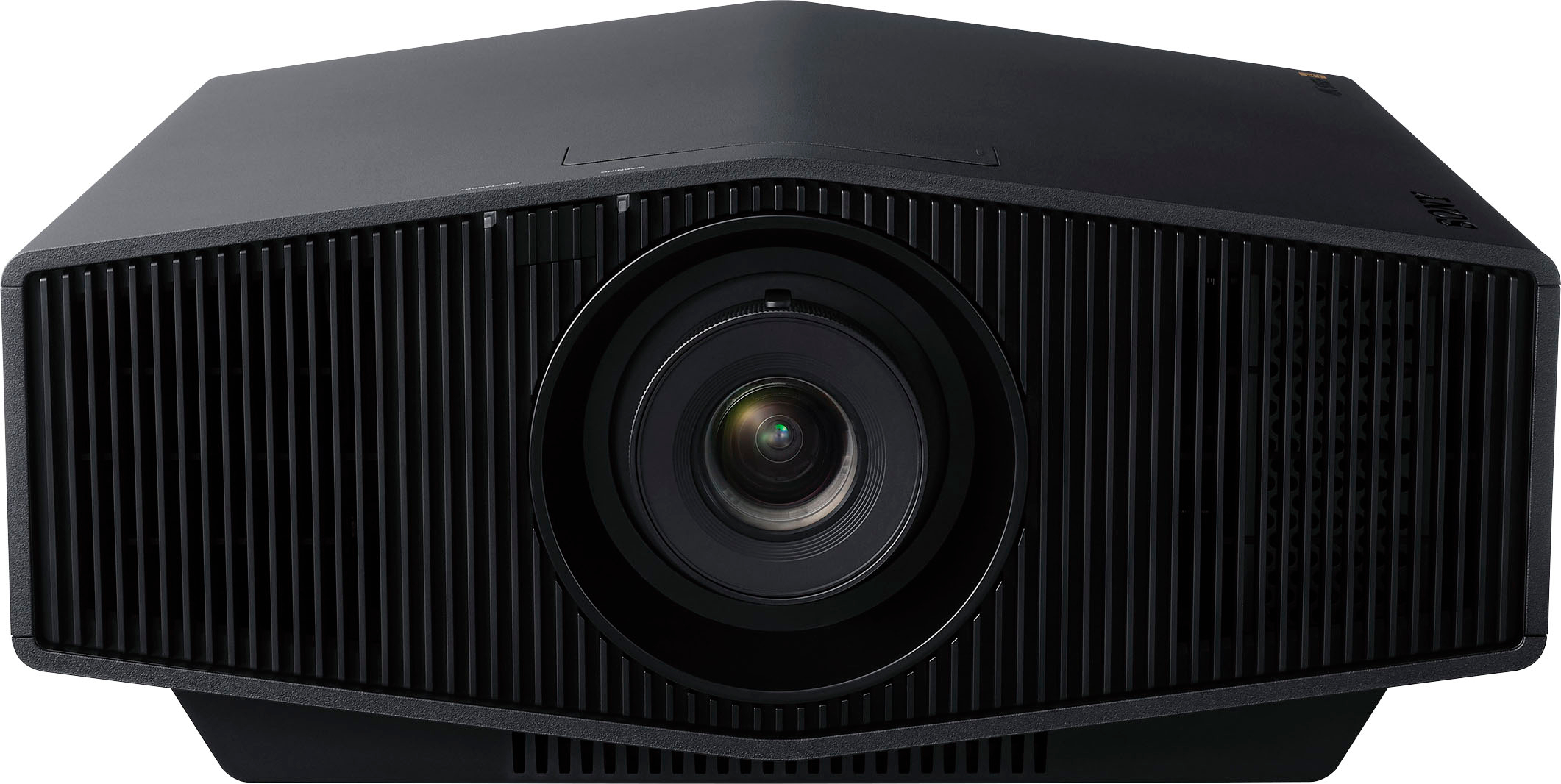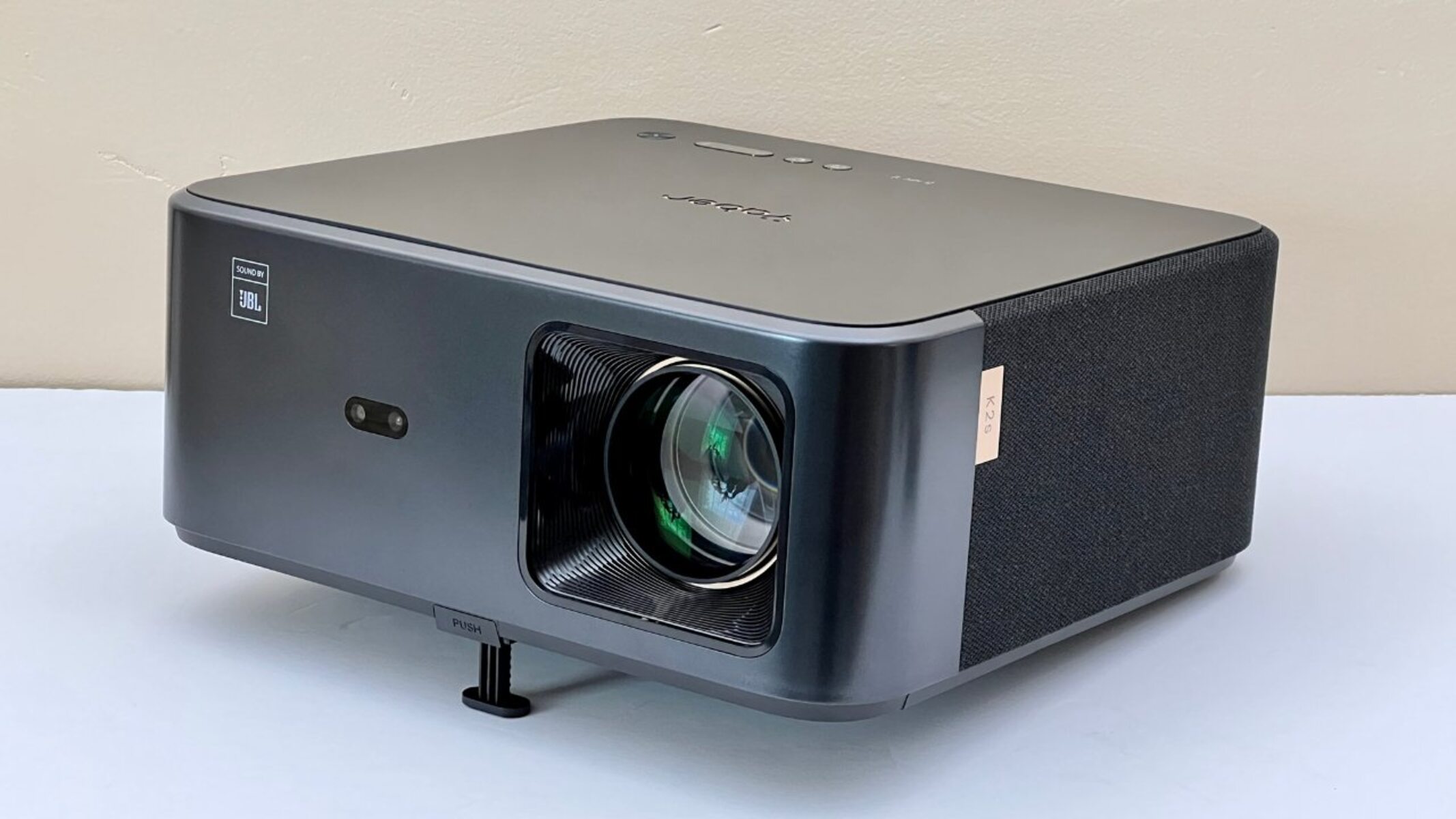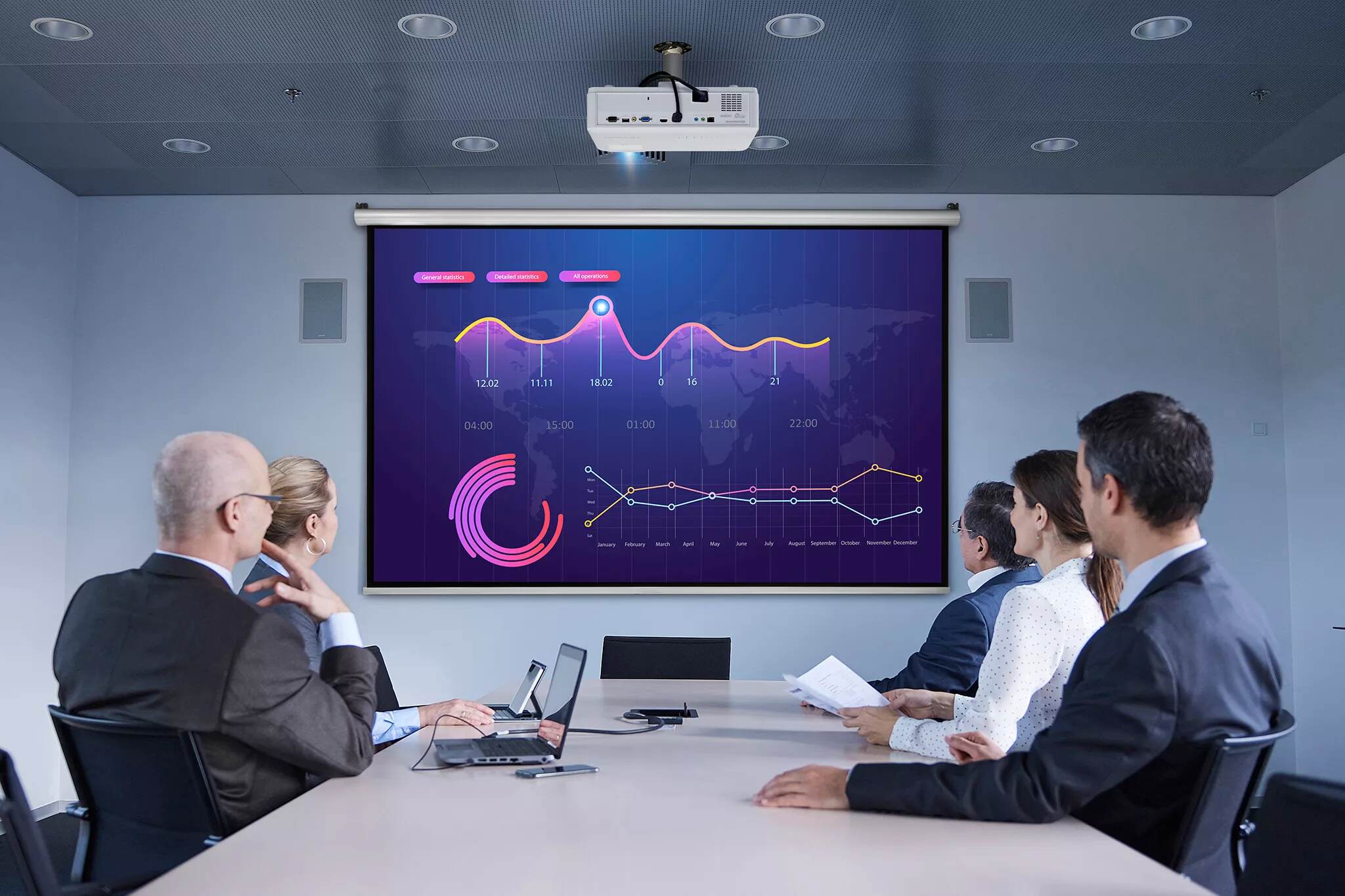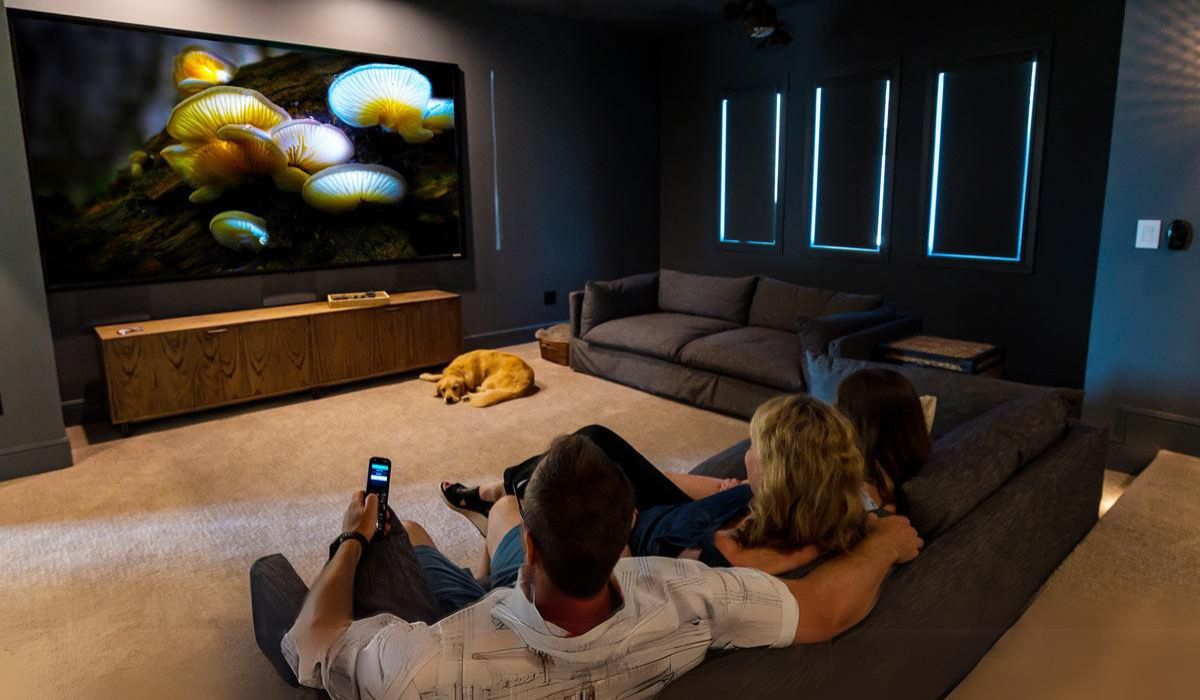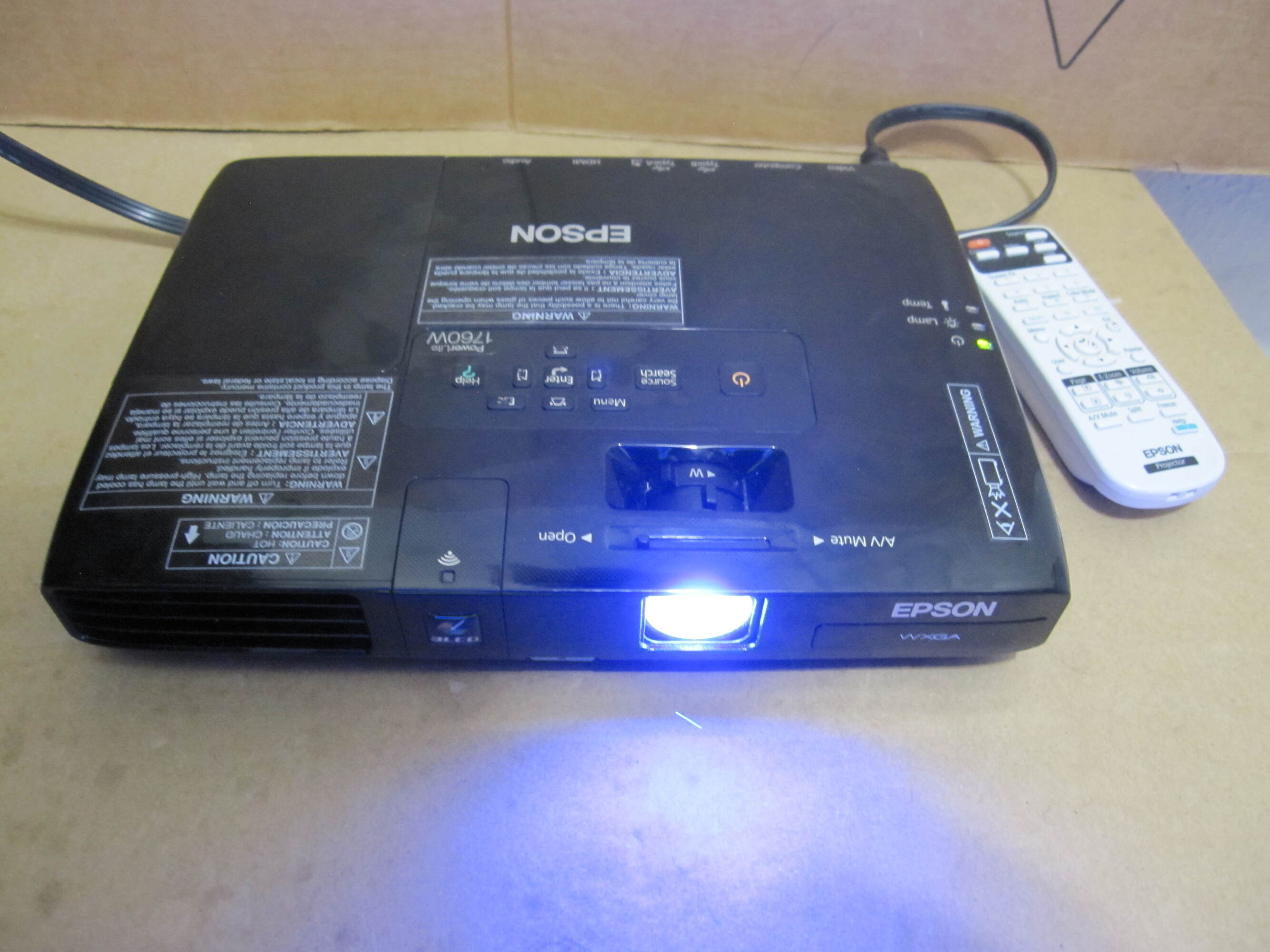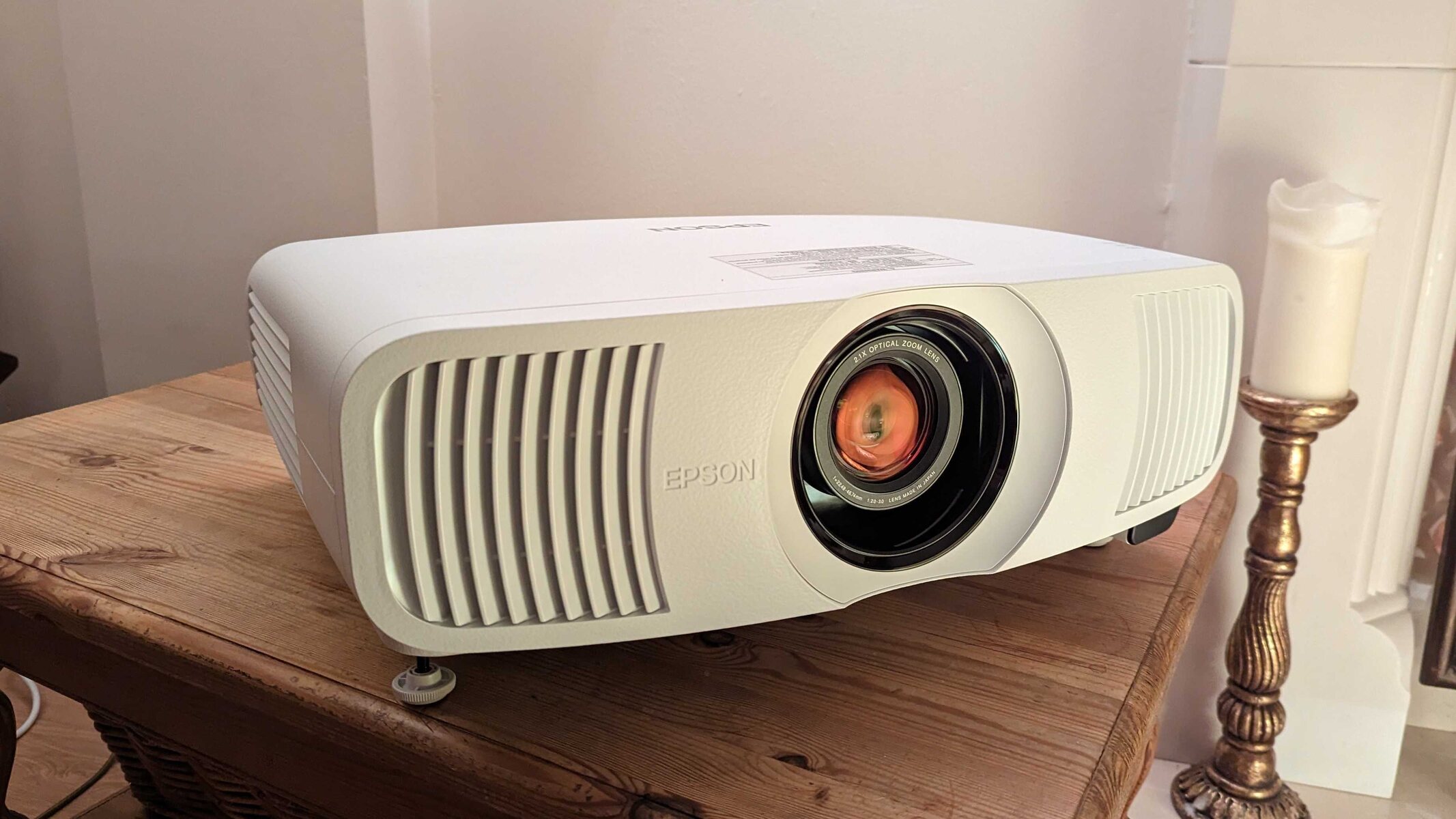Introduction
Welcome to the world of projectors, where stunning visuals come to life on large screens. Whether you’re setting up a home theater, delivering a presentation at work, or enjoying a movie night with friends, projectors have become an integral part of our lives. However, one aspect of projectors that often surprises consumers is the cost of projector lamps.
Projector lamps play a crucial role in the overall performance and functionality of projectors. They provide the essential light source that allows images and videos to be projected onto a screen. While projectors themselves range in price, it’s the cost of projector lamps that can catch many people off guard.
In this article, we will explore the reasons why projector lamps are often expensive and what factors contribute to their pricing. We’ll also discuss alternative options and cost-saving measures that you can consider. So, let’s dive into the world of projector lamps and uncover the mystery behind their price tags.
What is a projector lamp?
A projector lamp, also known as a projector bulb or projector light source, is a vital component of a projector. It is responsible for producing the bright light needed to project images and videos onto a screen. Essentially, a projector lamp is the heart of any projector system without which it cannot function.
Projector lamps are most commonly used in multimedia projectors, ranging from small portable projectors to large high-definition projectors found in theaters and conference rooms. These lamps are specifically designed to emit intense light that can be focused and projected through the projector lens.
Projector lamps consist of several key parts, including the lamp module, reflector, focusing lens, and electrical connections. The lamp module contains the actual bulb that produces the light, which is typically a high-intensity discharge (HID) lamp or an LED lamp. The reflector helps direct the light towards the lens, while the focusing lens allows for adjustment and sharpness of the projected image.
It’s important to note that projector lamps have a limited lifespan, typically measured in hours. The lifespan can vary depending on the type and brand of the projector lamp, as well as the intensity of use. Once a lamp reaches the end of its lifespan, it needs to be replaced to ensure optimal performance and image quality.
Now that we understand the basic concept of a projector lamp, let’s delve into the technology behind these essential components and how they are manufactured.
The technology behind projector lamps
Projector lamps utilize advanced technology to generate the bright light required for projection. Two commonly used types of lamps are high-intensity discharge (HID) lamps and LED lamps.
HID lamps, such as metal halide lamps or xenon lamps, have been widely used in projectors for many years. They operate by creating an electric arc between two electrodes inside a sealed quartz or ceramic bulb filled with gas. This arc generates an intense light which is then filtered and directed towards the projector lens.
LED lamps, on the other hand, have gained popularity in recent years due to their energy efficiency and extended lifespan. LED stands for Light Emitting Diode, and these lamps use an array of tiny LED chips to produce the required light output. LED lamps offer advantages such as lower power consumption, instant on/off functionality, and a longer lifespan compared to traditional HID lamps.
Both HID and LED lamps have their own unique characteristics and advantages, and the choice between them depends on factors such as image quality requirements, energy efficiency considerations, and budget constraints.
In addition to the lamp type, the technology behind projector lamps also involves the use of specialized coatings, reflectors, and lenses to optimize light output and enhance image quality. Anti-reflective coatings are applied to the lenses to minimize light loss and improve brightness, while reflectors help focus and direct the light towards the projection lens.
Furthermore, some projector lamps incorporate advanced features like DLP (Digital Light Processing) or LCD (Liquid Crystal Display) technology. DLP projectors use a digital micromirror device (DMD) to create visuals, while LCD projectors utilize liquid crystal panels to control the passage of light, resulting in vibrant and detailed images.
The technology behind projector lamps continues to evolve, with manufacturers constantly working on improving efficiency, brightness, and color accuracy. This ongoing development serves to enhance the overall viewing experience and ensure exceptional image quality.
Now that we have an understanding of the technology behind projector lamps, let’s explore the manufacturing process involved in creating these essential components.
The manufacturing process of projector lamps
The manufacturing process of projector lamps involves several intricate steps to ensure optimal performance and reliability. While different manufacturers may have variations in their processes, the overall production steps remain relatively similar.
1. Lamp bulb creation: The first step in the manufacturing process is the creation of the lamp bulb itself. This involves the careful selection of raw materials, such as quartz or ceramic, which are then formed into the desired bulb shape. The bulb is then sealed to maintain its air-tightness and filled with the appropriate gas mixture, depending on the lamp type.
2. Electrode placement: Next, electrodes are carefully positioned inside the bulb to facilitate the electric arc that produces the light. The electrodes are typically made of tungsten or another suitable material that can withstand the high temperatures generated during lamp operation.
3. Lamp assembly: Once the bulb and electrodes are ready, they are assembled into a lamp module. This module includes additional components like reflectors and lenses for light direction and focusing. The module is designed to be easily installed and replaced in the projector.
4. Quality testing: Before the lamps are ready for market release, they undergo rigorous quality testing. This testing ensures that the lamps meet the required performance standards, including brightness, color accuracy, and lifespan. Defective lamps are removed from the production line to maintain quality control.
5. Packaging and distribution: After passing quality testing, the lamps are carefully packaged, often in protective containers, to prevent damage during transit. The packaged lamps are then distributed to retailers, wholesalers, and projector manufacturers for incorporation into their products.
6. Compatibility considerations: It is important to note that projector lamps are designed to be compatible with specific projector models. This means that not all lamps are universally interchangeable. Manufacturers closely collaborate with projector brands to ensure that their lamps meet the necessary requirements to function seamlessly.
The manufacturing process of projector lamps requires precision, attention to detail, and adherence to quality standards. Each step is crucial in ensuring that the lamps perform optimally and provide users with a high-quality projection experience.
Now that we understand the manufacturing process involved, let’s explore the various factors that contribute to the cost of projector lamps.
Factors influencing the cost of projector lamps
Several factors contribute to the cost of projector lamps, and understanding these factors can help shed light on why they can be relatively expensive. Let’s explore the key factors that influence the pricing of projector lamps:
1. Lamp technology: The type of lamp technology used, such as HID or LED, can significantly impact the cost. LED lamps, for example, tend to be more expensive upfront due to their advanced technology and longer lifespan.
2. Lamp lifespan: The projected lifespan of a lamp plays a role in its cost. Lamps with longer lifespans often come at a higher price point, as they require more durable materials and advanced manufacturing techniques to ensure longevity.
3. Brand reputation: Projector lamp brands with a strong reputation for quality and reliability generally command higher prices. These brands invest in research and development, ensuring that their lamps meet stringent quality standards, and offer customer support and warranty coverage.
4. OEM vs. aftermarket: Original Equipment Manufacturer (OEM) lamps, which are produced by the projector manufacturer, tend to be more expensive compared to aftermarket or generic options. OEM lamps are specifically designed and calibrated for a particular projector model, guaranteeing compatibility and optimal performance.
5. Demand and availability: Supply and demand dynamics can influence the cost of projector lamps. If there is high demand and limited availability, the prices may be higher. Additionally, older or rare projector models may have limited lamp availability, resulting in higher prices for those specific lamps.
6. Technical specifications: Different projector models have varying technical specifications, including lamp wattage, brightness requirements, and color accuracy. Lamps designed to meet higher specifications may come at a premium due to the specialized components and manufacturing processes required.
7. Research and development costs: The development of new lamp technologies or advancements in existing technologies involves significant research and development costs. These costs are often factored into the final price of the lamps.
8. Distribution and marketing expenses: The costs associated with distributing, marketing, and promoting projector lamps also contribute to their overall pricing. This includes expenses related to packaging, transportation, advertising, and dealer commissions.
It’s important to consider these factors when evaluating the cost of projector lamps. While they may seem relatively expensive at first glance, the price is often reflective of the quality, performance, and durability that the lamps offer.
Next, let’s discuss the importance of considering quality and performance factors when purchasing projector lamps.
Quality and performance considerations
When it comes to purchasing projector lamps, it’s crucial to consider both the quality and performance factors. While cost may be a determining factor for many buyers, compromising on quality and performance can lead to subpar projection experiences and shorter lamp lifespans. Here are some key considerations to keep in mind:
1. Image quality: A high-quality projector lamp is essential for achieving vibrant and accurate colors, sharpness, and clarity in projected images. Investing in a lamp that delivers superior image quality ensures a visually pleasing and immersive viewing or presentation experience.
2. Color accuracy: Projector lamps with excellent color accuracy reproduce colors true to the original content. This is particularly important for applications where accurate color representation is crucial, such as in graphic design, photography, or video editing.
3. Brightness and luminosity: The brightness output of a projector lamp significantly impacts the visibility of projected images, especially in environments with ambient light. Lamps with higher brightness levels provide better visibility and ensure that the projected content stands out.
4. Contrast ratio: A higher contrast ratio results in more distinct separation between dark and light areas, enhancing the overall image quality. Lamps with better contrast ratios produce deeper blacks and brighter whites, creating a more dynamic and immersive viewing experience.
5. Lamp lifespan: Consider the estimated lifespan of the projector lamp, as it directly impacts its value for money. Longer-lasting lamps may have a higher upfront cost but can provide significant cost savings in the long run by not having to replace the lamp frequently.
6. Reliable performance: Opt for a reputable brand or OEM lamp that offers reliable performance and compatibility with your projector model. A lamp that is specifically designed for your projector ensures optimal performance, compatibility, and safety, maintaining the longevity of your projector system.
7. Warranty and customer support: Look for lamps that come with a warranty and reliable customer support. A warranty provides added peace of mind and indicates that the manufacturer stands behind the quality and durability of their product.
By considering these quality and performance factors, purchasers can make educated decisions when selecting a projector lamp. It’s important to strike a balance between cost and the desired performance to ensure a satisfying and long-lasting projection experience.
Next, let’s explore how the pricing of projector lamps is determined and what factors come into play.
Understanding the pricing of projector lamps
The pricing of projector lamps can vary significantly based on several factors. By understanding these factors, consumers can gain insight into why projector lamps are priced the way they are. Here are some important considerations:
1. Technology and materials: The type of lamp technology used, such as HID or LED, as well as the materials used in the manufacturing process, can impact the pricing. LED lamps, for example, tend to be more expensive due to their advanced technology and energy-efficient features.
2. Manufacturing costs: The manufacturing process of projector lamps involves complex steps, including the creation of the lamp bulb, placement of electrodes, assembly, and quality testing. These processes require specialized equipment, skilled labor, and quality control measures, which contribute to the overall cost of production.
3. Research and development: Manufacturers invest significant resources in research and development to improve lamp technologies, enhance performance, and meet market demands. The costs associated with these innovations are often factored into the pricing of projector lamps.
4. Brand reputation and quality: Established brands with a strong reputation for quality and performance often have higher-priced projector lamps. This higher cost reflects the investment these brands make in maintaining their reputation, providing reliable products, and offering customer support.
5. Supply and demand: Supply and demand dynamics can influence the pricing of projector lamps. If a particular model or brand is in high demand but has limited availability, the price may be higher. Conversely, when there is lower demand, prices may be more competitive.
6. OEM vs. aftermarket: Original Equipment Manufacturer (OEM) lamps, produced by the projector manufacturer, typically come with a higher price tag due to their guaranteed compatibility and optimized performance. Aftermarket or generic lamps, while often more affordable, may not offer the same level of quality or longevity.
7. Additional features and specifications: Projector lamps with advanced features, larger wattage, higher brightness, or specialized compatibility requirements may come at a premium. These factors contribute to the overall cost of the lamp.
8. Distribution and marketing expenses: Expenses related to packaging, transportation, wholesale and retail markups, advertising, and dealer commissions add to the pricing of projector lamps.
While some consumers may find projector lamps to be relatively expensive, it’s essential to consider the value and performance they provide. Investing in a quality lamp ensures optimal image quality, durability, and compatibility with your projector system.
Now, let’s explore some alternatives and cost-saving options that can help mitigate the overall expenses associated with projector lamps.
Alternatives and cost-saving options
While projector lamps can be a significant investment, there are alternatives and cost-saving options available to help manage the overall expenses. Here are a few options to consider:
1. OEM and aftermarket options: When it’s time to replace your projector lamp, you can choose between OEM lamps, which are specifically designed by the projector manufacturer, and aftermarket or generic options. OEM lamps offer guaranteed compatibility and performance, but they often come at a higher price. Aftermarket options may be more affordable, but be sure to research and choose a reputable brand to ensure quality and compatibility.
2. Lamp module replacement: In some cases, only the lamp portion of the module needs replacement rather than the entire module itself. By replacing just the lamp module, you can potentially save costs compared to buying a complete new module.
3. Lamp longevity features: Some projectors offer settings or features that can help extend the lamp’s lifespan. These may include eco-mode or energy-saving options that reduce lamp usage, lower brightness settings when appropriate, or automatic shut-off timers. Utilizing these features effectively can help prolong the lamp’s life and reduce the frequency of replacements.
4. Lamp recycling programs: Some manufacturers or retailers offer lamp recycling programs where you can return your used lamp for recycling. These programs not only contribute to environmental sustainability but may also provide incentives or discounts towards the purchase of a new lamp, helping to offset costs.
5. Price comparison and promotions: Before making a purchase, compare prices from various retailers or online platforms. Look for promotions, discounts, or special offers that can help lower the overall cost of the lamp. Additionally, consider buying during seasonal sales or promotional periods when prices may be more competitive.
6. Projector upgrades or replacements: If your current projector has reached the end of its lifespan or no longer meets your requirements, consider upgrading to a new model. Newer projectors often come with optimized lamp technologies and improved energy efficiency, potentially leading to long-term cost savings in terms of lamp replacements.
7. Proper maintenance and care: Regular maintenance and proper care can help maximize the lifespan of your projector lamp. Keep the projector clean, ensure proper ventilation for heat dissipation, and follow manufacturer recommendations for usage and maintenance. This attention to maintenance can help prevent premature lamp failures and the need for frequent replacements.
By exploring these alternatives and implementing cost-saving strategies, you can effectively manage the expenses associated with projector lamps. Remember, it’s important to maintain a balance between cost savings and quality to ensure a satisfying projection experience.
Now, let’s explore some tips for extending the lifespan of your projector lamp.
Tips for extending the lifespan of a projector lamp
Extending the lifespan of your projector lamp not only helps you save on replacement costs but also ensures consistent performance over an extended period. Here are some tips to help you maximize the lifespan of your projector lamp:
1. Optimize projector settings: Adjust the brightness and contrast settings of your projector based on the ambient light conditions. Using the projector in an unnecessarily bright environment can strain the lamp and reduce its lifespan. Consider using eco-mode or energy-saving settings when appropriate.
2. Ensure proper ventilation: Overheating is one of the main reasons for premature lamp failure. Make sure the projector has adequate ventilation, with sufficient space around the vents for proper airflow. Keep air filters clean and free from dust to prevent clogging and overheating of the lamp.
3. Avoid frequent on/off cycles: Frequent on/off cycles can put stress on the lamp and reduce its lifespan. If possible, avoid turning the projector on and off frequently within short periods. Instead, leave the projector on standby mode if you plan to resume using it shortly.
4. Clean your projector regularly: Dust and dirt accumulation on the projector’s lens, vents, and other components can impair heat dissipation and lead to overheating. Regularly clean your projector, following the manufacturer’s guidelines, to ensure proper airflow and optimal performance.
5. Give the projector a cool-down period: After each use, allow the projector to cool down before turning it off or disconnecting the power. This cool-down period helps the lamp to gradually cool down and prevents thermal stress on the lamp.
6. Avoid physical shocks or impacts: Handle your projector with care and avoid subjecting it to unnecessary shocks or impacts. Physical damage can disrupt the delicate components of the lamp and lead to premature failures.
7. Use it in a stable environment: Projectors perform best in stable environments with consistent temperature and humidity levels. Avoid exposing your projector to extreme temperatures or high humidity, as these conditions can affect the lamp’s performance and longevity.
8. Keep the projector level: Ensure that your projector is properly mounted or placed on a stable, level surface. A tilted or unstable projector can cause stress on the lamp and other internal components, leading to premature wear and tear.
9. Follow manufacturer guidelines: Always refer to the manufacturer’s guidelines and recommendations for lamp usage, maintenance, and replacement. Each projector model may have specific instructions for optimal performance and lamp lifespan.
By following these tips, you can help extend the lifespan of your projector lamp and maximize its performance. A well-maintained projector lamp will not only save you money on frequent replacements but also ensure consistent and high-quality projections for your various needs.
Now, let’s wrap up this article by summarizing the key points discussed.
Conclusion
Projector lamps are a vital component of any projection system, providing the necessary light source for crisp and vibrant visuals. While the cost of projector lamps may come as a surprise to some, it’s crucial to understand the factors that contribute to their pricing. Lamp technology, manufacturing processes, brand reputation, and supply and demand dynamics all play a role in determining the cost of projector lamps.
When considering projector lamps, it’s important to prioritize quality and performance. Factors such as image quality, color accuracy, brightness, and lamp lifespan should be taken into account to ensure a satisfying viewing or presentation experience.
There are also alternatives and cost-saving options available, including choosing between OEM and aftermarket lamps, utilizing lamp module replacements, and taking advantage of promotions or discounts. Proper maintenance and care, along with optimized projector settings, can help extend the lifespan of your projector lamp, reducing the need for frequent replacements.
Ultimately, the investment in a high-quality projector lamp pays off in terms of image quality, durability, and compatibility. By understanding the pricing and factors influencing projector lamps, as well as implementing the tips and cost-saving strategies provided, users can make informed decisions and optimize their projection experiences.
Now that you have a better understanding of projector lamps and how to make the most of them, you can confidently embark on your projector journey, enjoying stunning visuals and immersive experiences for years to come.







